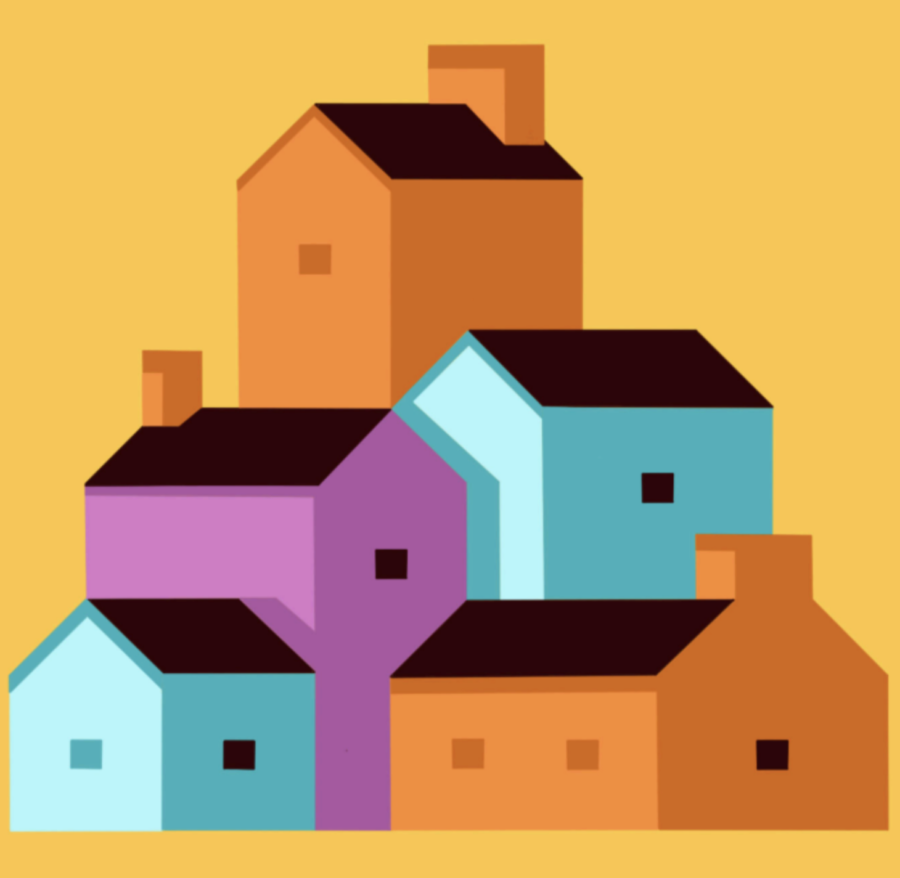Repurposing the abandoned real estate in Cleveland
November 11, 2022
If you have traveled outside of campus, you have likely seen run-down buildings, empty spaces and abandoned lots. If you have not seen these, let me paint you a picture:
To the west, there are open green lands, full of grass. Some of these are blocked by metal fences, sitting vacant next to busy highways and outside of a growing college campus. There are small brick buildings with broken and boarded up windows, leaky roofs and falling walls. Abandoned housing and apartments next to the remains of a town that once was as vibrant as the campus near it. Abandoned storefronts are covered in graffiti and have been ignored for years.
To the north, there are houses that are falling apart. They have boarded-up windows, overgrown ivy, cracked driveways and sidewalks and crumbling structures. Houses that used to comfortably hold a family of four now hold the memories of years long gone and quickly forgotten people.
When you drive past these buildings and spaces in Cleveland, it is clear that there used to be industry. However, when steel collapsed in Cleveland and Pittsburgh, the money left, and the people followed suit soon after.
Having grown up in Western Pennsylvania, I know that there are obvious differences between the places that were abandoned with the collapse of steel, and the ones that never recovered. These towns have some of the worst drug and alcohol problems, with scarce grocery stores. Kids are stuck with parents unable to pay for food, or who waste it on cigarettes and beer. Families live off food stamps, banks and kitchens, not able to break the cycle. Furthermore, the schools are just as poor as the people and cannot provide the same utilities that schools nearby have in spades.
With all these empty buildings and green space cut in half due to road infrastructure—mind you, facilitated by people who don’t care about parks or walking areas—, it is hard to imagine a world in which these buildings and areas can be used. But the next time you drive or walk past a strip of abandoned city, or a place near you that you often ignore, imagine a school. One like the one you go to, with new dorms, technology and teachers that can help students stuck in a cycle of drugs, poverty and teenage pregnancies.
Imagine this: stores and towns brought back to life with small businesses, and large corporations bringing industry back to places that have been devoid of life for so long. Imagine groups that are dedicated to helping the less fortunate and bringing life back to disheartened citizens. Imagine teams working with local governments to help foster kids enroll in safe schools, fixing the issues of the foster care system and giving these lost kids a chance. Imagine places with warmth, safety and stability—places that could be home for these kids.
Throughout the country and world, there are many people that don’t have the same opportunities as us—they can’t imagine a world outside of where they are stuck. By collectively working to help the underprivileged—giving them a place to explore who they are, where they come from and make the world a better place—, we can work toward a better world. We can work toward lowering the amount of people living off government aid and barely scraping by, decreasing the levels of obesity and mental health disorders, healing the environment and creating new jobs.
We may only be students, and this may be idealistic, but these abandoned places are doing nothing for the local community. However, other cities would love to have new forms of revenue, new places for people to live and new hope for their constituents. These buildings are falling apart, when instead, they can be put to use; if we work to help bring life back to these infrastructures, we could make a big difference in Cleveland and the surrounding areas.
While I am aware that Pittsburgh was hit harder when steel collapsed, and much of what I have seen is in relation to that, there are many other locations with similar issues—and the same recovering principles can be applied. Whether it is the slums of your town or the impact of systematic racism somewhere else, you know what areas need help. We can do more than we think we are capable of. We just have to try.


